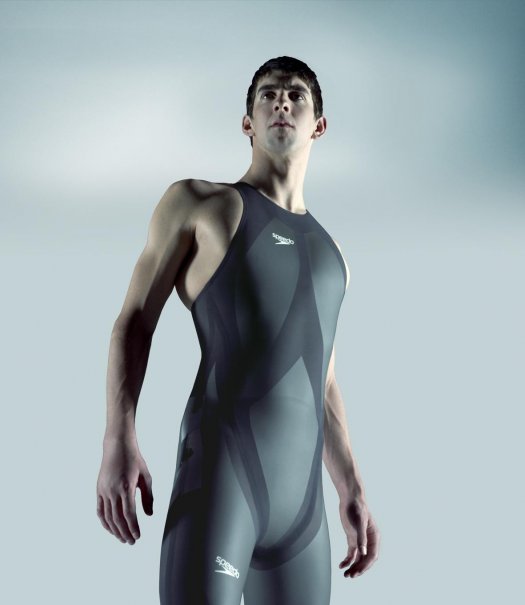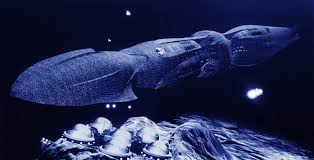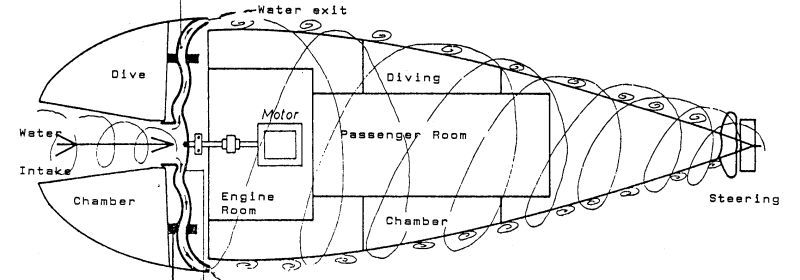It looks like you're using an Ad Blocker.
Please white-list or disable AboveTopSecret.com in your ad-blocking tool.
Thank you.
Some features of ATS will be disabled while you continue to use an ad-blocker.
share:
Researchers at the Harbin Institute of Technology in northeast China tell the South China Morning Post that they’re hard at work on a submarine that the newspaper claims could travel the 6,100 miles from “Shanghai to San Francisco in 100 minutes.”
The reported plans for the super-fast Chinese submarine draw on research that reaches back to the Cold War on “supercavitation,” a technology that creates a friction-less air “bubble” around a vessel that allows it to “fly” underwater, facilitating incredible speeds. The Russians have developed torpedoes that travel faster than 230 mph using that approach.
“…Our method is different from any other approach, such as vector propulsion,” which involves engine thrust. Rather, he would lubricate the vessel in a special liquid that would reduce water friction until the vessel would reach speeds high enough to enable “supercavitation.”
How could a vessel reach such high speeds in the first place? And how would it be steered? Li says the liquid membrane would navigate the vessel. “By combining liquid-membrane technology with supercavitation, we can significantly reduce the launch challenges and make cruising easier,”

Source
Neat the Chinese want to make subs out of the shark skin swimsuits

Its good to see someone is trying to make new things, it seems the world stale after the cold war in many aspects, I dont think they will have anything functional anytime soon, if they ever get it but its time someone make the seaquest submarine already

Please move or delete if not in the right forum or already posted
Chinese source
edit
on 26-8-2014 by Indigent because: (no reason given)
a reply to: Indigent
The problem with super cavitation is maneuvering. That's always been the drawback to torpedoes that use it. If the target can detect them early enough, and move, it can't turn fast enough to keep up. This will be much more of a problem for a sub that uses the technology.
The problem with super cavitation is maneuvering. That's always been the drawback to torpedoes that use it. If the target can detect them early enough, and move, it can't turn fast enough to keep up. This will be much more of a problem for a sub that uses the technology.
Reminds me a little of the good old Victor Schauberger submarine


edit on 26-8-2014 by EartOccupant because: (no reason given)
What would happen if it did an emergency climb and came out of the water at speed?
Would the splash be abnormal in any way?
I was never really good at science, but this star trek stuff is so cool.
Would the splash be abnormal in any way?
I was never really good at science, but this star trek stuff is so cool.
a reply to: AngryCymraeg
The hull would probably split into at last two pieces from the force of the impact.
The hull would probably split into at last two pieces from the force of the impact.
If the chinese do this I will blow bubbles at them that release farts when the bubble pops.
If they fly underwater subs using bubbles then i will make a plane that swims through the sky, by using a network of strategically placed lawn sprinklers.
If they fly underwater subs using bubbles then i will make a plane that swims through the sky, by using a network of strategically placed lawn sprinklers.
edit on 26-8-2014 by mattsawaufo because: (no reason given)
Nothing new here.
"Sharkskin" coverings were developed decades ago, as were liquid boundary layers.
The last America's Cup winner used a liquid compound dispensed over the underwater surfaces.
Textured surfaces have been made illegal in Olympic Rowing after the 3M coating enabled the US to win gold in the '70's.
Other classes of sailing boats with less restrictive rules are using a textured material to reduce drag.
A friend who worked on Oracle tells me the drag reduction is 100%. I know, I told him that was impossible.
Anything the Chinese are doing is stolen US technology.
"Sharkskin" coverings were developed decades ago, as were liquid boundary layers.
The last America's Cup winner used a liquid compound dispensed over the underwater surfaces.
Textured surfaces have been made illegal in Olympic Rowing after the 3M coating enabled the US to win gold in the '70's.
Other classes of sailing boats with less restrictive rules are using a textured material to reduce drag.
A friend who worked on Oracle tells me the drag reduction is 100%. I know, I told him that was impossible.
Anything the Chinese are doing is stolen US technology.
a reply to: Indigent
The US went a different route many years ago. They went for being incredibly stealthy over speed, and endurance and maneuverability on the torpedoes.
The US Ohio class missile subs have only been tracked for a few minutes, and that only a few times, at last once after a mechanical failure.
The US went a different route many years ago. They went for being incredibly stealthy over speed, and endurance and maneuverability on the torpedoes.
The US Ohio class missile subs have only been tracked for a few minutes, and that only a few times, at last once after a mechanical failure.
originally posted by: Indigent
a reply to: Psynic
no, i put the shark skin as an easier example, it's not like that and they are not stealing American tec, otherwise where are the US supercavitation subs?
Actually, it's EXACTLY "like that".
As Zaphod correctly states, the USN has examined and discarded (as far as we know) super cavitating UWVs.
If you don't think China is actively copying US submarine technology you are waaaay wrong.
a reply to: Psynic
America the inventors of all... So if America discard it and China copies all, why they dint follow the path of stealth as well any other country in the world.
Everyone copies everyone, or do you think America came with the concept of stealth planes?
America the inventors of all... So if America discard it and China copies all, why they dint follow the path of stealth as well any other country in the world.
Everyone copies everyone, or do you think America came with the concept of stealth planes?
a reply to: Indigent
Actually the US didn't copy stealth. They used the mathematical formula from Russia after it was published and they realized what it was. Prior to that there was no way to accurately calculate RCS.
The US isn't the inventor of all, but are generally ahead of everyone else in most fields, because of doctrine, experience, and basically getting there first.
Actually the US didn't copy stealth. They used the mathematical formula from Russia after it was published and they realized what it was. Prior to that there was no way to accurately calculate RCS.
The US isn't the inventor of all, but are generally ahead of everyone else in most fields, because of doctrine, experience, and basically getting there first.
a reply to: Zaphod58
And when they dont get there first they just claim they tried that but dint like it so in the end they where the first...
Its so hard to believe the Chinese say they base their research in soviet technology and still Americans claim its copied from America.
Most of American accomplishments were taken from Germany and develop by Germans
And when they dont get there first they just claim they tried that but dint like it so in the end they where the first...
Its so hard to believe the Chinese say they base their research in soviet technology and still Americans claim its copied from America.
Most of American accomplishments were taken from Germany and develop by Germans
originally posted by: Zaphod58
a reply to: AngryCymraeg
The hull would probably split into at last two pieces from the force of the impact.
I'd hate to imagine what might happen to the crew from the impact. Interesting idea, but I can imagine that sonar would hear it coming a mile away. Hmmmm. If it was incredibly fast how well would it be able to see what was in front of it?
a reply to: AngryCymraeg
That's another reason the Navy went another route. You're blind as a bat at certain speeds from your own noise.
That's another reason the Navy went another route. You're blind as a bat at certain speeds from your own noise.
originally posted by: AngryCymraeg
originally posted by: Zaphod58
a reply to: AngryCymraeg
The hull would probably split into at last two pieces from the force of the impact.
I'd hate to imagine what might happen to the crew from the impact. Interesting idea, but I can imagine that sonar would hear it coming a mile away. Hmmmm. If it was incredibly fast how well would it be able to see what was in front of it?
True, true and true.
Let the Chinese spend their money on supercavitating submarines.
Having read the article the following can be stated:
There are several problems the Chinese will have to overcome. The first is the noise issue. The submarines by their very nature must be quiet. Noise is a dead giveaway. Even a sub moving around creates some noise. They all have some rhythm or sound that they make and use the back ground to try to disguise such.
So they want to project air or gas in front of it, then would that not create bubbles in the general area, that would alert any listening or in the area to its presence. And like shooting ducks or a clay pigeon, one well timed depth charge and it is all over. Then there is another problem, the gas itself. The water is dense, gasses are lighter, one cannot have gas suspended under the water, it tends to rise. And as some have pointed out maneuvering.
The idea of moving fast under the water has always been there, but the problems may be a bit bigger than what they are anticipating.
There are several problems the Chinese will have to overcome. The first is the noise issue. The submarines by their very nature must be quiet. Noise is a dead giveaway. Even a sub moving around creates some noise. They all have some rhythm or sound that they make and use the back ground to try to disguise such.
So they want to project air or gas in front of it, then would that not create bubbles in the general area, that would alert any listening or in the area to its presence. And like shooting ducks or a clay pigeon, one well timed depth charge and it is all over. Then there is another problem, the gas itself. The water is dense, gasses are lighter, one cannot have gas suspended under the water, it tends to rise. And as some have pointed out maneuvering.
The idea of moving fast under the water has always been there, but the problems may be a bit bigger than what they are anticipating.
new topics
-
RFK is Trumps health pick
2024 Elections: 7 hours ago
top topics
-
The art of being offended
Social Issues and Civil Unrest: 15 hours ago, 20 flags -
FLORIDA Sues Biden-Harris FEMA for Denying Disaster Assistance to Homeowners with TRUMP Signs.
US Political Madness: 16 hours ago, 15 flags -
Thanksgiving 2024
Member Art: 13 hours ago, 12 flags -
RFK is Trumps health pick
2024 Elections: 7 hours ago, 12 flags
active topics
-
Mike Tyson returns 11-15-24
World Sports • 30 • : Encia22 -
The art of being offended
Social Issues and Civil Unrest • 32 • : andy06shake -
Alex Jones Reinstated on X
Education and Media • 85 • : NoCorruptionAllowed -
FLORIDA Sues Biden-Harris FEMA for Denying Disaster Assistance to Homeowners with TRUMP Signs.
US Political Madness • 38 • : Flyingclaydisk -
Nephilim looked like clowns
Conspiracies in Religions • 37 • : andy06shake -
US warship Edsall Lost after Pearl Harbor Attack Found 80 Years Later ... by Accident
Mainstream News • 13 • : andy06shake -
Thanksgiving 2024
Member Art • 15 • : Flyingclaydisk -
Critical shortcomings of the Patriot complex
Weaponry • 98 • : Lazy88 -
The Trump effect 6 days after 2024 election
2024 Elections • 114 • : PorkChop96 -
President-elect TRUMP Picks MATT GAETZ for his ATTORNEY GENERAL - High Level PANIC Ensues.
2024 Elections • 72 • : tjack
